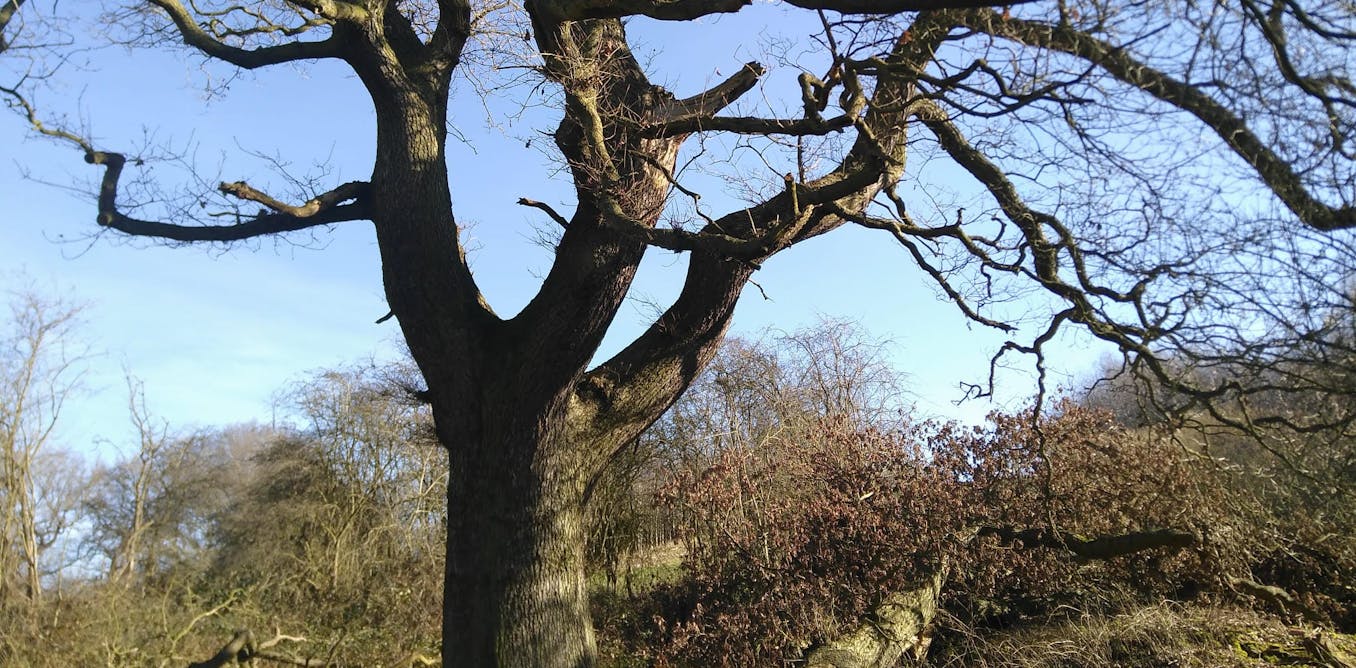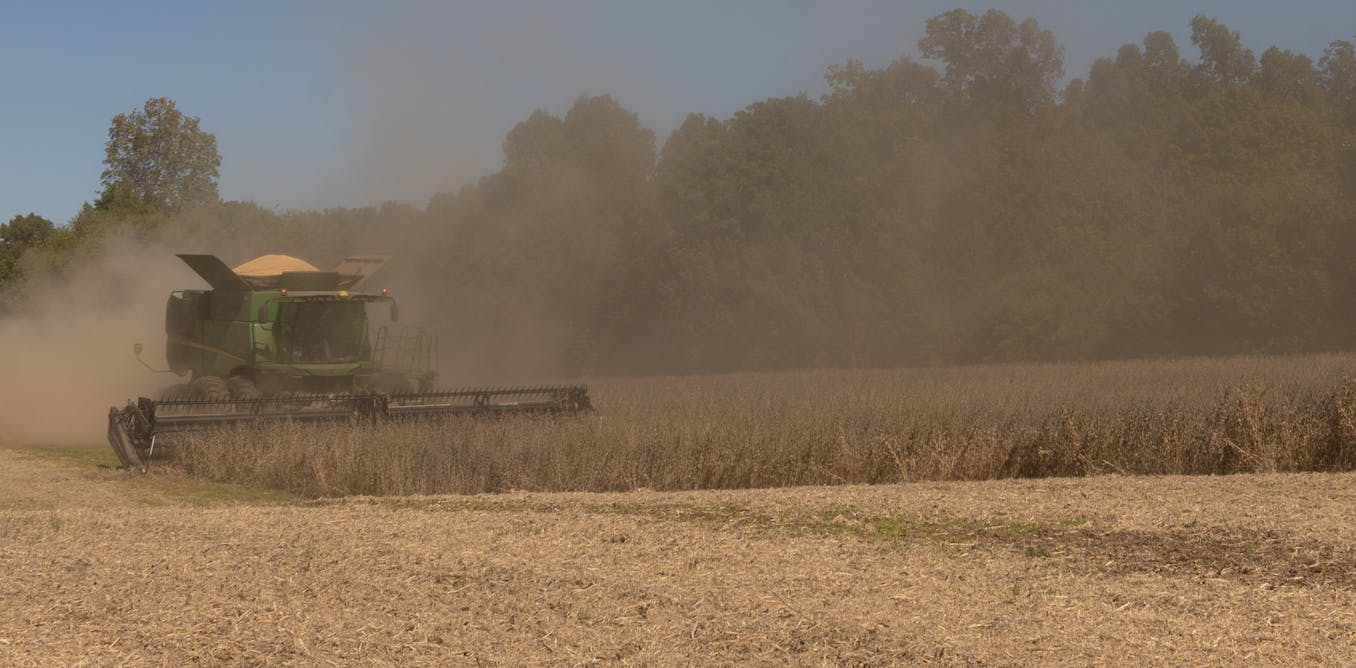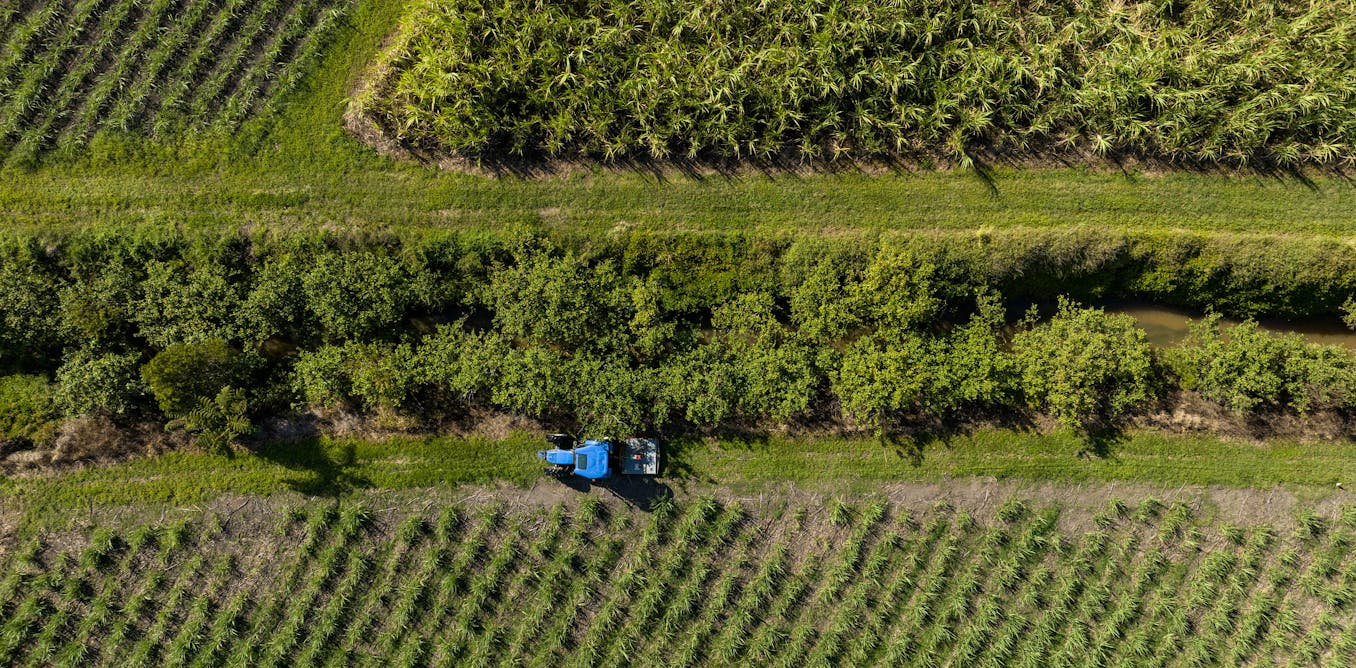Look closely at a plant in your local park, your garden or even your kitchen, and you’re likely to see some damage. Whether a caterpillar has chewed away part of a leaf or a mealybug is sucking on sap, animals are constantly feeding on plants.
Of course, herbivory, or plant predation, is not ideal for a plant’s survival. So plants have evolved many different defense mechanisms to inhibit this threat, including physical and chemical weapons. For example, cactuses arm their bodies with skin-piercing spines. Herbs such as mint, lavender and rosemary produce volatile scent compounds that can help deter herbivores.
Other plants resort to bribing personal bodyguards by secreting thick, sweet nectar.
Nectar is most commonly associated with flowers, where it is used to entice bees, birds or butterflies to move pollen from one flower to another. But other plants produce different types of nectar glands called extrafloral nectaries. Plants produce these glands to bribe ants with a sweet reward; in return, ants will defend the plant from insect herbivores.
I study plant evolutionary biology, and recently worked with fern biologist Fay-Wei Li at the Boyce Thompson Institute and Cornell University ant biologist Corrie Moreau to examine the evolution of ant-bribing defense mechanisms in plants.
We found something striking: nearly 130 million years ago, during the Cretaceous geologic period, ferns and flowering plants independently evolved ant-bribing nectar glands at roughly the same time. We figured this out by using complex algorithms to estimate the evolutionary origin and history of ferns, flowering plants and ants.
This timing is quite interesting because it was very early in flowering plant evolutionary history, but quite late in fern evolutionary history. Our work demonstrated that old dogs can learn some new tricks – and, even more importantly, how it happened in ferns.
Meeting above the ground
Plants are the primary producers of nearly all of the food supply on Earth, so virtually all living creatures rely on them for survival. For this reason, herbivory is part of life. But it also creates serious costs for many industries, from house plants to agricultural crops. Major pest outbreaks can even threaten global food security.
For all of these reasons, understanding how plants defend themselves against predators is a critical challenge.
The evolution of ant-mediated defense strategies inexorably linked two lineages across the kingdom of life. It meant that ants and plants would eventually evolve together – a process called coevolution. As one species changes, the other may change in response, and these changes can even become encoded in their genes.
Flowering plants originated in the Cretaceous period, around 150 million years ago, and our analyses demonstrated that they formed tight associations with ants early on. These flowering plants and their ant partners seemingly evolved together over time.
But ferns didn’t. While they had the potential to develop nectaries at the same time as flowering plants, they didn’t start to evolve nectaries at fast rates until they learned to live among the trees.
Ferns originally were terrestrial plants, but after flowering plants evolved into large trees, ferns jumped onto their branches as epiphytes – plants that grow on other plants, often with no attachment to the ground.
Jacob Suissa, CC BY-ND
Ferns can also climb up trees, as ivy does, or create their own trunks in the case of tree ferns. This also helped ferns get into the canopy.
The fact that ferns didn’t start producing nectar for ants until they moved up into trees confused me as a fern biologist. That was, until my coauthor Corrie Moreau pointed out that most ants lived in treetops.
This made perfect sense. As ferns became canopy dwellers, they began to grow closer to ants that were already associated with nectary-bearing trees. Comingling with these ants, ferns eventually tapped into the established mutually beneficial relationship between the ants and flowering plants.
The evolution and ecology of fern-ant relationships
While our study discovered new aspects of ant-mediated plant defense, it left many questions unanswered. For instance, are some ants specializing on ferns, or are they generalists that can feed on nectar from a wider range of plants? How, exactly, did plants originally develop the physical capacity to produce extra-floral nectar? Are the genes that encode for nectary development the same between ferns and flowering plants? Is the chemistry of fern and flowering plant nectar the same?
Our study lays the foundation for further research into the evolution and ecology of these nectaries. This is important foundational science. It’s also conceivable that research in this area could contribute to breeding programs that promote nectary-mediated ant defense, reducing the need for pesticides to protect plants from predators.

The post “Ferns and flowers bribe helpful ant defenders with nectar, but ferns developed this ability much later – our study shows why” by Jacob S. Suissa, Assistant Professor of Plant Evolutionary Biology, University of Tennessee was published on 06/20/2024 by theconversation.com



































